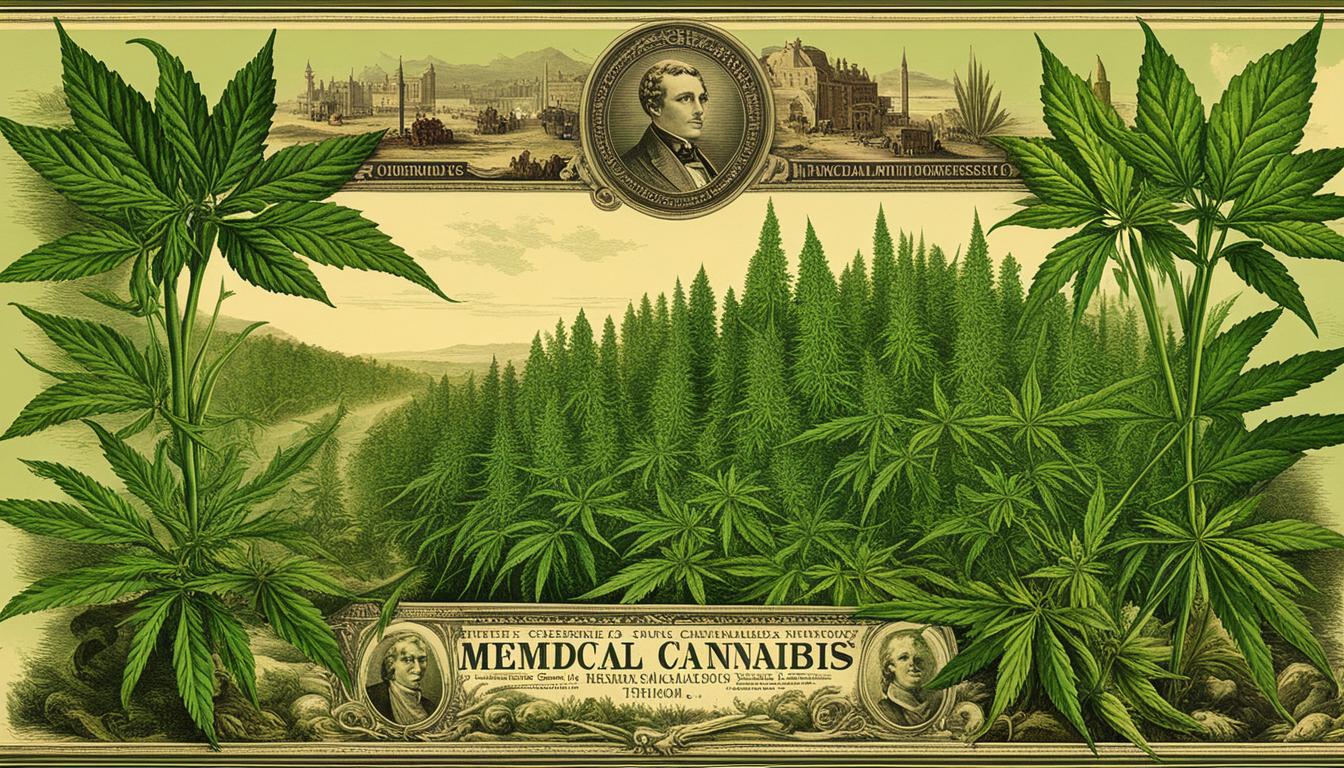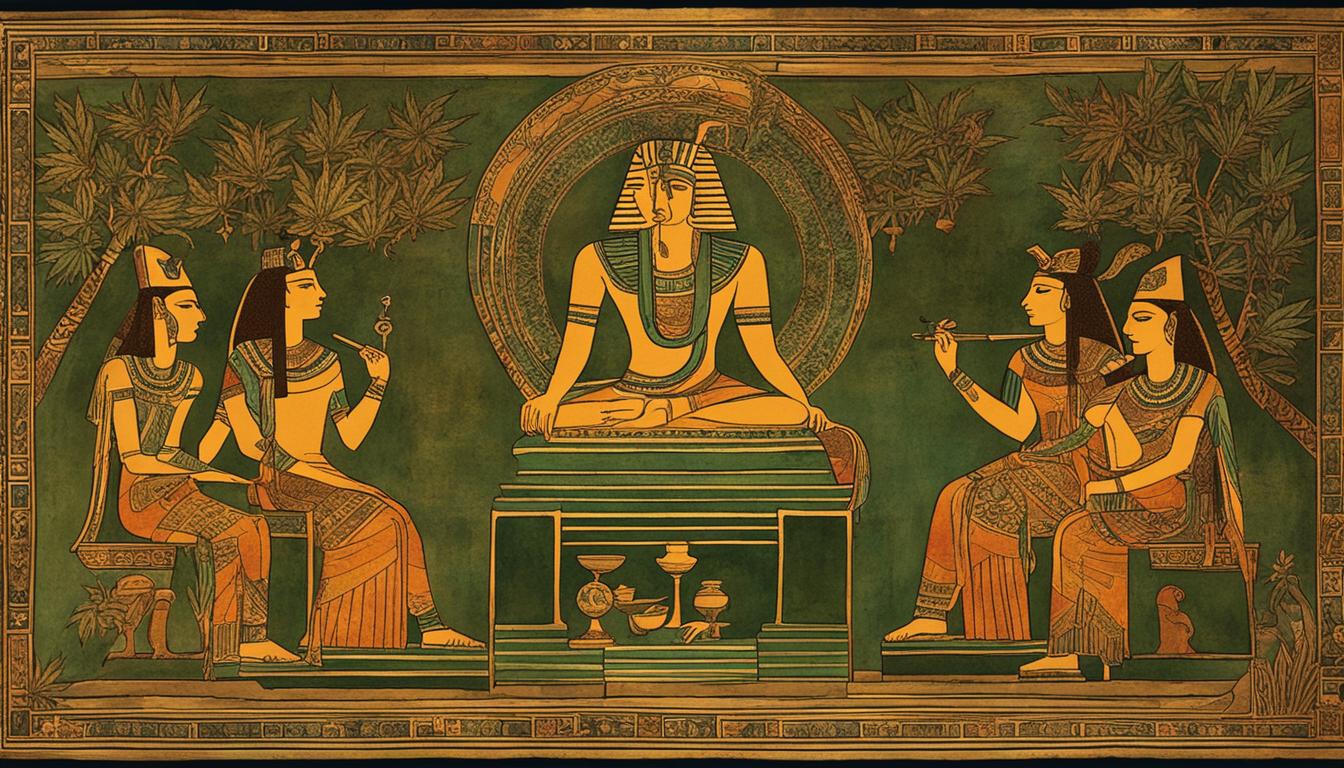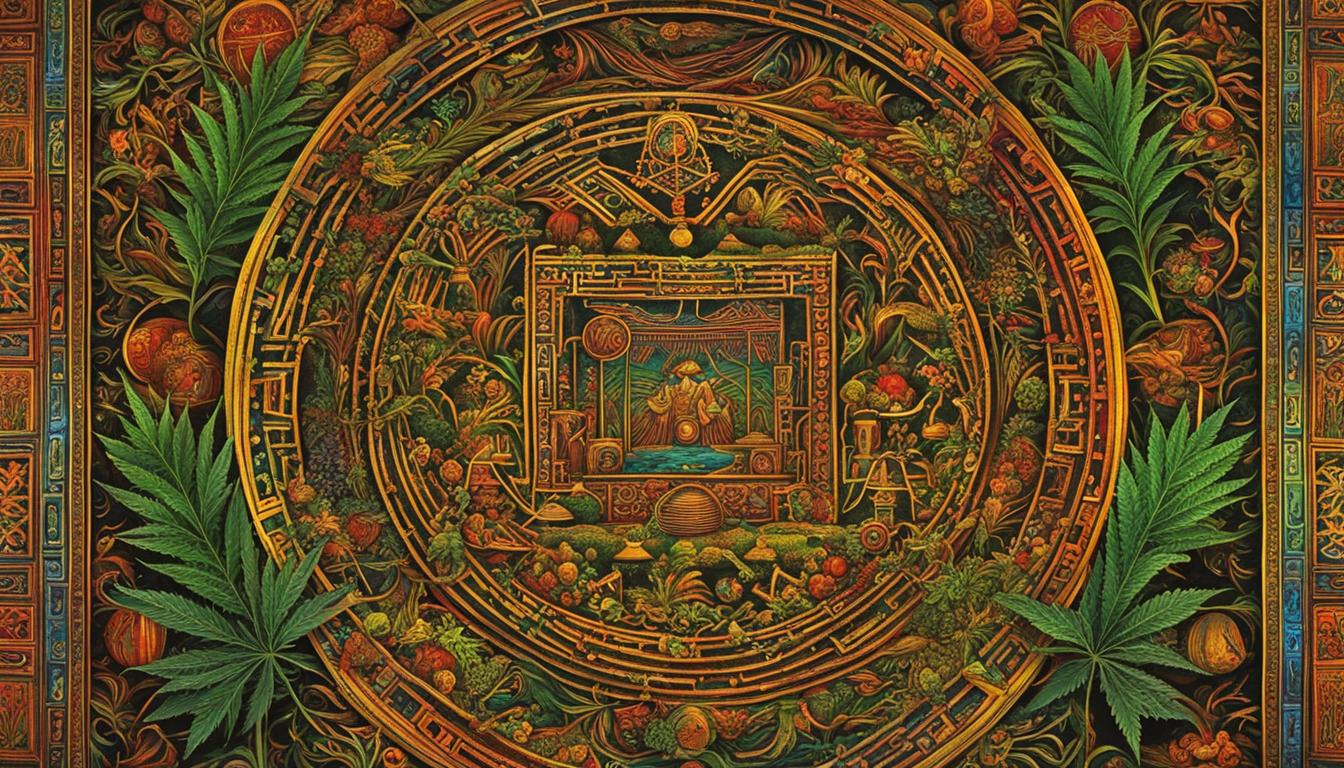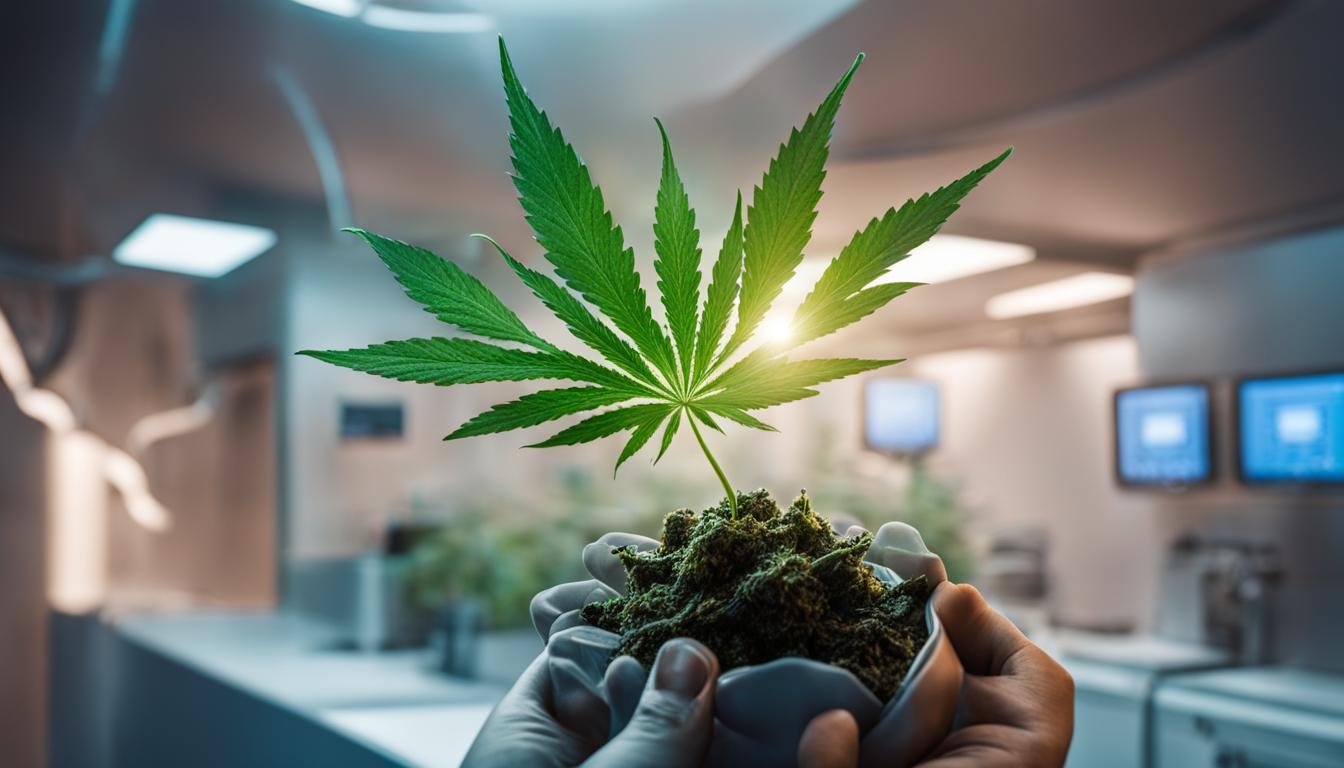What Are the Key Milestones in the History of Medical Cannabis?
Welcome to a journey through time, exploring the captivating history of medical cannabis. From ancient civilizations to groundbreaking scientific discoveries, the milestones in the use of cannabis for medicinal purposes have shaped its recognition and application in the field of medicine. Join us as we delve into the rich tapestry of cannabis in medicine, uncovering its profound impact on human health and well-being.
Throughout the ages, cannabis has played a pivotal role in healthcare. Its therapeutic properties have been documented in texts dating as far back as 2800 BC. Emperor Shen Nung’s pharmacopoeia, a revered ancient Chinese medical text, included cannabis as a remedy for a variety of health problems.
As civilizations flourished, so did the use of cannabis in medicine. Ancient Hindu texts, Chinese writings, and even the works of Greek and Roman scholars all made mention of the medicinal properties of cannabis. From treating arthritis and depression to managing inflammation and pain, cannabis was revered for its healing potential.
Medieval Arabic medicine made significant contributions to the use of cannabis as well. Physicians like Ibn-Sina, also known as Avicenna, recognized the benefits of cannabis in treating various ailments, including inflammatory conditions, ear infections, and skin rashes.
The 19th century marked a turning point in the history of medical cannabis, with the introduction of cannabis to the Western world by Irish surgeon William B. O’Shaughnessy. Inspired by his experiences in India, O’Shaughnessy brought cannabis to Europe and developed the first cannabis tincture sold in the United States.
Advancements in scientific research unveiled the chemical compounds that make cannabis unique. In 1963, cannabidiol (CBD) was isolated and identified, followed by the isolation and understanding of tetrahydrocannabinol (THC) in 1964, the principal psychoactive compound in cannabis.
It wasn’t until the 1990s that the discovery of the endocannabinoid system shed light on the intricate interactions between cannabis and the human body. This new biological messaging system, involving receptors such as CB1 and CB2, revealed the potential for cannabis to influence metabolism and health regulation.
As we embark on this enlightening exploration, we invite you to join us in uncovering the key milestones that have shaped the history of medical cannabis. From ancient civilizations to modern scientific breakthroughs, the journey promises to be both inspiring and informative. Stay tuned as we unveil the remarkable milestones that have transformed cannabis into a potential source of therapeutic benefits for various health conditions.
Ancient Use of Cannabis in Medicine
Emperor Shen Nung, also known as the father of Chinese medicine, played a significant role in the ancient use of cannabis for medicinal purposes. Around 2800 BC, he included cannabis in his pharmacopoeia, recognizing its potential healing properties. Ancient texts from various civilizations, including the Indian Hindus, Assyrians, Greeks, and Romans, also documented the therapeutic indications of cannabis for a wide range of health problems.
Cannabis was considered valuable in treating conditions such as arthritis, depression, inflammation, and pain. These ancient civilizations recognized the medical properties of cannabis and utilized it in their healthcare practices. For example, ancient Hindu texts even attributed the use of cannabis in religious rites to reducing fever, emphasizing its importance in both the spiritual and healing realms.
Through these ancient practices and written records, we can trace back the history of cannabis as a medicinal herb to thousands of years. The knowledge and understanding of its medical properties have been passed down through generations, leaving a legacy that has persisted to the present day.
Historical Quotes:
“The use of cannabis in medical applications dates back thousands of years, with Emperor Shen Nung’s inclusion of the plant in his pharmacopoeia. This ancient knowledge highlights the recognition of cannabis as a powerful medicinal herb in the earliest periods of human history.”
“The ancient civilizations of India, Assyria, Greece, and Rome also recognized the therapeutic indications of cannabis and used it extensively for various health problems. The diverse uses of cannabis in these ancient societies further demonstrate the widespread acknowledgement of its medical properties.”
Ancient Use of Cannabis in Medicine – Historical Table
| Ancient Civilization | Time Period | Medical Uses of Cannabis |
|---|---|---|
| Chinese | Around 2800 BC | Included in Emperor Shen Nung’s pharmacopoeia; used for various health problems |
| Indian Hindus | Ancient times | Used in religious rites to reduce fever and for medicinal purposes |
| Assyrians | Ancient times | Used for treating various health problems |
| Greeks | Ancient times | Mentioned in medical texts for its therapeutic indications |
| Romans | Ancient times | Utilized in the treatment of arthritis, depression, inflammation, and pain |
Early References to Medical Cannabis
The history of medical cannabis can be traced back to ancient times, with early references found in Chinese texts and Sanskrit Ayurvedic texts. These ancient civilizations recognized the therapeutic properties of cannabis and documented its use in treating various health conditions.
In Chinese texts, believed to be the first written references to medical cannabis, cannabis was mentioned as a remedy for various ailments. While the exact origin and authorship of these texts are debated, they provide valuable insights into the early use of cannabis in medicine.
Cannabis was referred to as “bhanga” in the Sanskrit Ayurvedic texts, where it was used as an anti-phlegmatic. These texts described its potential benefits in managing respiratory conditions and promoting overall well-being.
The inclusion of cannabis in medical practices of ancient civilizations, such as the Chinese and Indian cultures, highlights its longstanding history as a medicinal plant. These early references laid the foundation for further exploration and understanding of the therapeutic potential of cannabis.
| Chinese Texts | Sanskrit Ayurvedic Texts |
|---|---|
| Earliest written references to medical cannabis. | Described cannabis as “bhanga” and its use as an anti-phlegmatic. |
| Debated origin and authorship. | Highlighted potential benefits in managing respiratory conditions. |
| Documented cannabis as a remedy for various ailments. | Contributed to the overall well-being of individuals. |
These early references to medical cannabis in Chinese and Sanskrit Ayurvedic texts paved the way for further research and exploration of its medicinal properties. The knowledge and wisdom of ancient civilizations continue to shape our understanding of the therapeutic potential of this remarkable plant.

Medieval Arabic Medicine and Cannabis
The use of cannabis in medicine continued to evolve during the medieval period, with significant contributions from Arabic physicians. One of the most renowned figures in this field was Ibn-Sina, also known as Avicenna. In his influential work, the “Canon of Medicine,” Ibn-Sina documented the use of cannabis as a treatment for various conditions.
In medieval Arabic medicine, cannabis was recognized for its anti-inflammatory properties and its efficacy in alleviating ear infections and skin rashes. The use of cannabis-based remedies was seen as a valuable addition to the physician’s toolkit, providing relief to patients suffering from these ailments.
Cannabis was often used in the form of oils or extracts, which were applied topically or ingested orally. The medical practitioners of the time understood the therapeutic potential of cannabis and incorporated it into their treatment protocols, demonstrating their advanced knowledge and understanding of its benefits.
“The use of cannabis in medieval Arabic medicine highlights the early recognition of its medicinal properties. Physicians like Ibn-Sina saw its value in treating inflammation, ear infections, and skin rashes, further solidifying cannabis as a valuable tool in the world of medicine.”
Table: Medicinal Uses of Cannabis in Medieval Arabic Medicine
| Condition | Treatment |
|---|---|
| Inflammation | Application of cannabis oil |
| Ear Infections | Topical cannabis-based remedy |
| Skin Rashes | Cannabis extracts for topical use |
The contributions of medieval Arabic medicine to the use of cannabis in healing practices cannot be overstated. These early pioneers recognized the therapeutic potential of cannabis and integrated it into their medical treatments, setting the stage for further exploration and discovery in the field of medical cannabis.
William B. O’Shaughnessy and the Introduction of Cannabis to the West
William B. O’Shaughnessy, an Irish surgeon and physician, played a monumental role in bringing the benefits of medical cannabis to the Western world during the 19th century. While serving in India, O’Shaughnessy witnessed firsthand the medicinal properties of local cannabis varieties and recognized their potential for therapeutic use.
Impressed by the remarkable effects cannabis had on patients, O’Shaughnessy decided to introduce Cannabis indica to Europe. He collaborated with a pharmacist to develop the first cannabis tincture sold in the United States, paving the way for widespread recognition and adoption of medical cannabis in the Western medical community.
“The cannabis tincture developed by O’Shaughnessy became highly sought after, and its popularity grew rapidly. Patients experienced relief from various ailments, ranging from pain and inflammation to epilepsy and spasms.”
O’Shaughnessy’s pioneering work opened new possibilities for the medical application of cannabis, sparking further research and exploration into its therapeutic potential. The introduction of medical cannabis to the West marked a significant turning point in the history of cannabis as a recognized form of medicine.
Medical Cannabis Milestones
| Year | Milestone |
|---|---|
| 2800 BC | Emperor Shen Nung includes cannabis in his pharmacopoeia |
| Ancient civilizations | Cannabis is used in various cultures for medicinal purposes |
| Sanskrit Ayurvedic texts | Earliest known references to cannabis as “bhanga” in Ayurveda |
| Medieval Arabic medicine | Cannabis mentioned as a treatment by Ibn-Sina |
| 19th century | William B. O’Shaughnessy introduces cannabis to the West |
| 1963 | Discovery and isolation of cannabidiol (CBD) |
| 1964 | Identification of tetrahydrocannabinol (THC) |
| 1990s | Discovery of the endocannabinoid system |
The introduction of cannabis to the West by William B. O’Shaughnessy marked a pivotal moment in the history of medical cannabis. From ancient civilizations to scientific breakthroughs, the milestones in medical cannabis have shaped its recognition and application as a therapeutic agent.
Discoveries of THC and CBD
In the mid-20th century, groundbreaking discoveries were made regarding the chemical composition of cannabis, leading to the identification and isolation of two key compounds: tetrahydrocannabinol (THC) and cannabidiol (CBD). These discoveries have had a profound impact on our understanding of the medicinal properties of cannabis.
In 1963, researchers at the Hebrew University in Tel Aviv, Israel, successfully isolated and identified CBD, a non-psychoactive compound found exclusively in cannabis. This was a significant breakthrough as it marked the first time that a specific compound within cannabis had been isolated and identified.
“The isolation of CBD opened up a whole new avenue of research into the potential therapeutic applications of cannabis,” said Dr. Rachel Greenburg, a leading researcher in the field. “We now know that CBD has numerous potential benefits, including its anti-inflammatory, anti-anxiety, and antipsychotic properties.”
A year later, in 1964, the same research team at the Hebrew University made another groundbreaking discovery, outlining the chemical structure of THC, the principal psychoactive compound in cannabis. This discovery shed light on the mechanisms by which THC interacts with the human body and produces its psychoactive effects.
Since then, research into THC and CBD has continued to uncover their potential therapeutic uses. THC has been found to have analgesic properties, making it effective in providing relief from pain and discomfort. CBD, on the other hand, is being investigated for its potential in treating epilepsy, anxiety disorders, and other neurological conditions.
| THC | CBD |
|---|---|
| Psychoactive compound | Non-psychoactive compound |
| Produces psychoactive effects | Does not produce psychoactive effects |
| Analgesic properties | Anti-inflammatory properties |
| Used for pain relief | Investigated for epilepsy and anxiety |
These discoveries have paved the way for further research and the development of medical cannabis products that utilize THC and CBD in various forms. From oils and tinctures to edibles and topical creams, patients now have access to a wide range of options that harness the therapeutic potential of these compounds.
The Promising Future of Cannabis Research
As our knowledge of cannabis and its compounds continues to grow, so too does the potential for new discoveries and advancements in medical treatment. Researchers around the world are exploring the intricacies of the endocannabinoid system and its relationship to various health conditions.
With ongoing studies and clinical trials, we can expect to see even more breakthroughs in the field of medical cannabis. From the development of targeted therapies to the refinement of dosage and delivery methods, the future looks bright for patients who can benefit from the medicinal properties of cannabis.
Discovery of the Endocannabinoid System
The discovery of the endocannabinoid system was a significant milestone in understanding the biological effects of cannabis on the human body. In 1990, Dr. Lisa Matsuda and her colleagues made a groundbreaking breakthrough by identifying the CB1-receptor, a key component of the endocannabinoid system. This discovery paved the way for further exploration into the intricate workings of this complex system.
The endocannabinoid system consists of a network of receptors, including the CB1 and CB2 receptors, that are found throughout the body. These receptors interact with endogenous cannabinoids, such as anandamide, to regulate various physiological processes, including metabolism, pain perception, and immune function. The discovery of the endocannabinoid system shed light on the mechanisms behind the medicinal properties of cannabis and opened up new avenues for therapeutic research.
“The endocannabinoid system plays a crucial role in maintaining homeostasis, or balance, in the body,” says Dr. Matsuda. “By understanding how this system works, we can potentially develop targeted therapies for a wide range of health conditions.”
Further studies have revealed that the CB1-receptor is primarily found in the central nervous system, while the CB2-receptor is predominantly present in immune cells and peripheral tissues. This distribution pattern suggests that the endocannabinoid system plays a significant role in regulating both neurological and immune responses.
The Role of the Endocannabinoid System in Health Regulation
Research into the endocannabinoid system has shown its involvement in various health conditions, including chronic pain, inflammation, and mental health disorders. The ability of cannabinoids to interact with the CB1 and CB2 receptors provides a potential target for therapeutic interventions.
In conclusion, the discovery of the endocannabinoid system has revolutionized our understanding of cannabis and its effects on the human body. This intricate system plays a vital role in maintaining balance and regulating various physiological processes. The identification of the CB1-receptor, CB2-receptor, and endogenous cannabinoids has paved the way for targeted therapies and further exploration of the potential therapeutic benefits of cannabis.
| Key Discoveries | Date |
|---|---|
| Discovery of CB1-receptor | 1990 |
| Discovery of anandamide | 1992 |
| Discovery of CB2-receptor | 1993 |
Conclusion
The history of medical cannabis is a fascinating journey filled with significant milestones that have shaped its recognition and application throughout the ages. From ancient civilizations to modern scientific discoveries, the use of cannabis as medicine has endured, proving its enduring value in healthcare.
Over thousands of years, cannabis has been utilized by diverse cultures for its therapeutic properties. It was Emperor Shen Nung in 2800 BC who first documented the medical use of cannabis in his pharmacopoeia, and since then, various civilizations such as the Indian Hindus, Assyrians, Greeks, and Romans have relied on cannabis to treat a range of health conditions.
Fast forward to the 21st century, and we witness the culmination of centuries of exploration. Medical cannabis has reached new heights with the identification and isolation of key compounds such as THC and CBD, which have revolutionized the medical field. Additionally, the discovery of the endocannabinoid system has shed light on the intricate mechanisms through which cannabis interacts with our bodies.
As we move forward, the medical cannabis timeline continues to unfold. With each passing day, new research emerges, unlocking the potential therapeutic benefits of this remarkable plant. Today, medical cannabis stands as a testament to the resilience of human curiosity, and its milestones provide hope for the future of healthcare.
FAQ
What is the history of medical cannabis?
The use of cannabis for medicinal purposes dates back to 2800 BC, where it was listed in Emperor Shen Nung’s pharmacopoeia. Throughout history, cannabis has been mentioned in texts of various civilizations, including the Indian Hindus, Assyrians, Greeks, and Romans, for treating a wide range of health problems such as arthritis, depression, inflammation, and pain.
Who included cannabis in their pharmacopoeia around 2800 BC?
Emperor Shen Nung, known as the father of Chinese medicine, included cannabis in his pharmacopoeia around 2800 BC.
Which ancient civilizations documented the therapeutic indications of cannabis?
Texts from ancient civilizations, including the Indian Hindus, Assyrians, Greeks, and Romans, documented the therapeutic indications of cannabis for various health problems. Ancient Hindu texts even attributed the use of cannabis in religious rites to reducing fever.
Who mentioned cannabis as a treatment for inflammation, ear infections, and skin rashes?
The renowned physician Ibn-Sina, also known as Avicenna, mentioned cannabis as a treatment for inflammation, ear infections, and skin rashes in his influential work, the “Canon of Medicine.”
Who introduced cannabis to the Western world in the 19th century?
William B. O’Shaughnessy, an Irish surgeon and physician, played a crucial role in introducing cannabis to the Western world in the 19th century. After observing the medical benefits of local cannabis varieties during his time in India, he brought Cannabis indica to Europe and worked with a pharmacist to develop the first cannabis tincture sold in the United States.
When were cannabidiol (CBD) and tetrahydrocannabinol (THC) identified?
In 1963, researchers at the Hebrew University in Tel Aviv isolated and identified cannabidiol (CBD), a compound found exclusively in cannabis. A year later, they also identified and outlined the chemical structure of tetrahydrocannabinol (THC), the principal psychoactive compound in cannabis.
What discoveries led to the understanding of the endocannabinoid system?
In 1990, Dr. Lisa Matsuda and her colleagues discovered the CB1-receptor, which led to the subsequent discovery of anandamide (the first endogenous cannabinoid) and the CB2-receptor in 1993. These discoveries revealed an entirely new biological messaging system, the endocannabinoid system, which plays a role in metabolism and health regulation.
What is the significance of the history of medical cannabis?
The history of medical cannabis is a long and evolving journey, with key milestones that have shaped its recognition and application. From ancient civilizations to modern scientific discoveries, the use of cannabis as medicine has persisted throughout history. The introduction of legislation, the identification of specific compounds, and the understanding of the endocannabinoid system have all contributed to its acceptance and utilization. Today, medical cannabis continues to be a subject of ongoing research and a potential source of therapeutic benefits for various health conditions.














